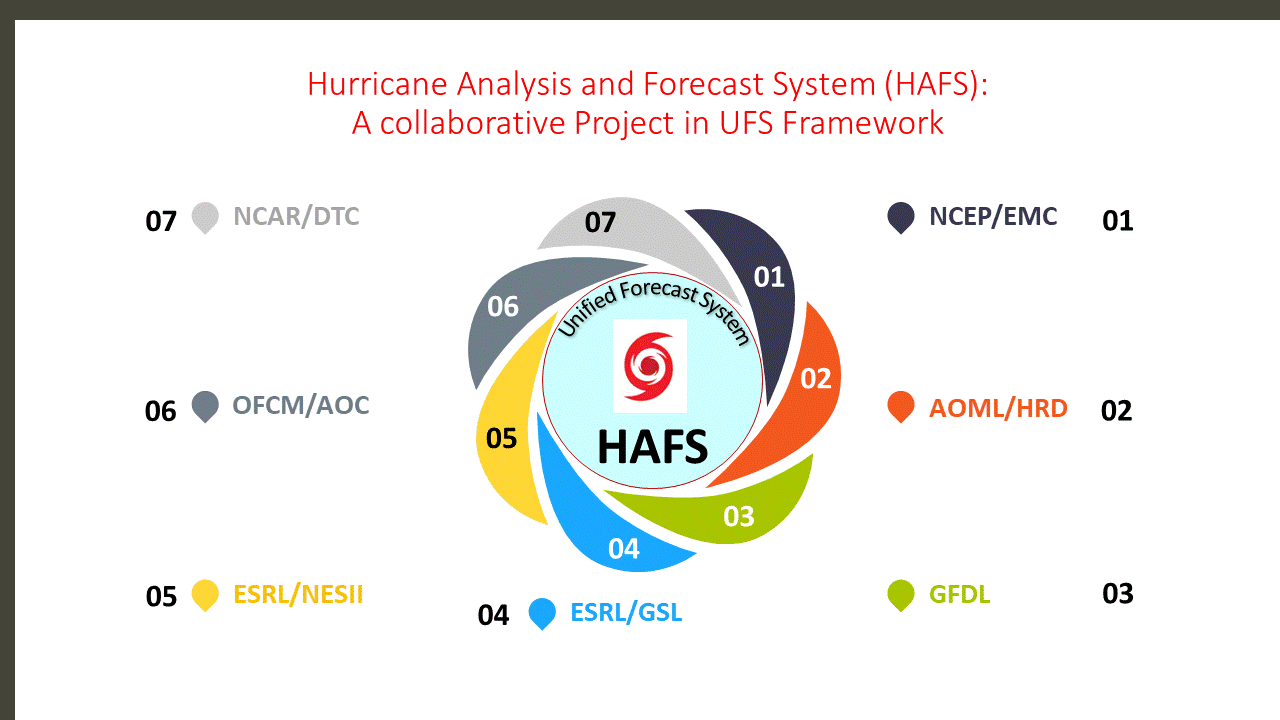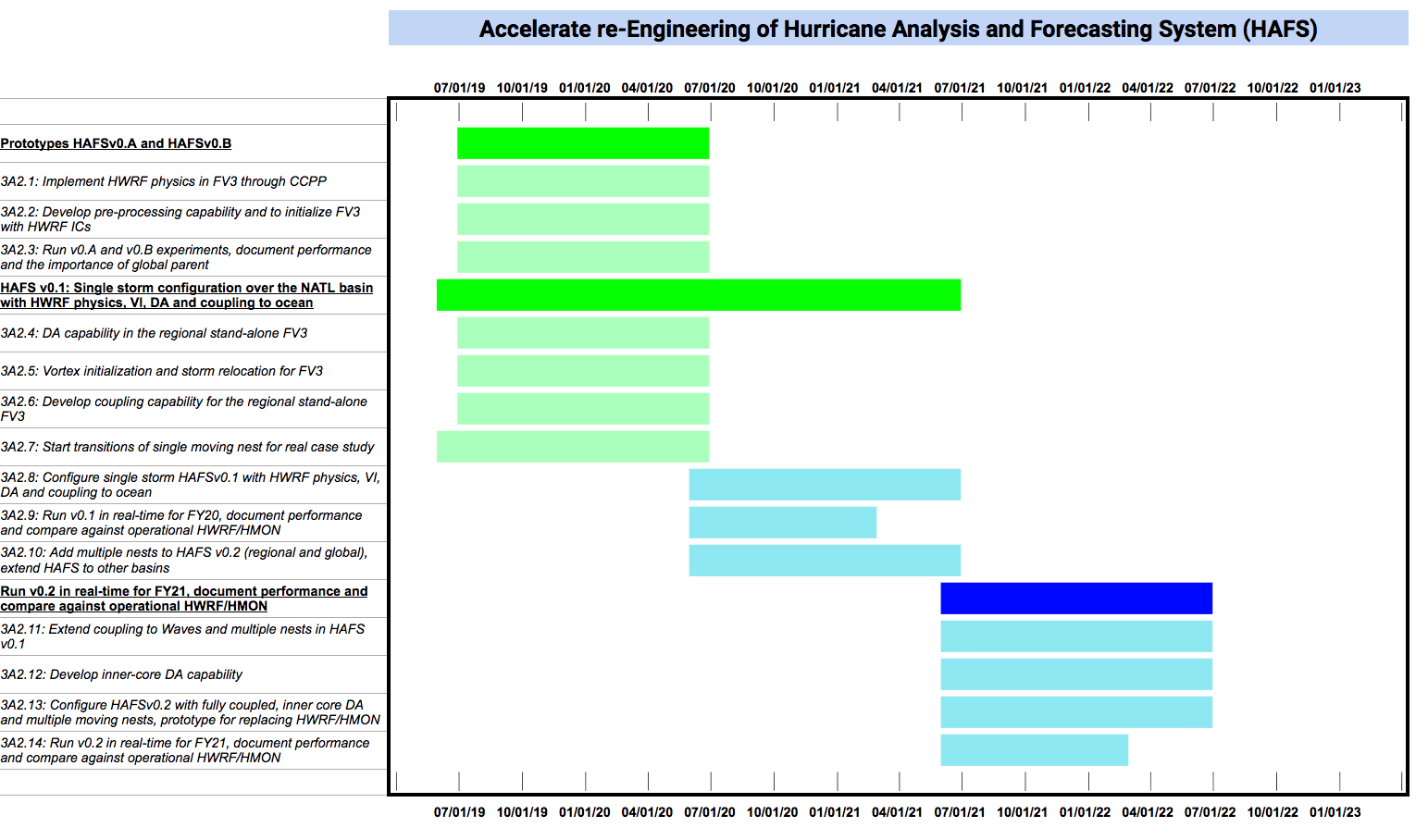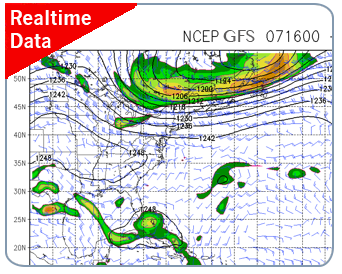HFIP HAFS

HAFS Introduction and Goals
One of the key strategies defined in the revised Hurricane Forecast Improvement Plan (HFIP) in response to the proposed framework for addressing Section 104 of the Weather Research Forecasting Innovation Act of 2017 is to advance an operational Hurricane Analysis and Forecast System (HAFS) at NOAA/NWS. HAFS will be a multi-scale model and data assimilation package capable of providing analyses and forecasts of the inner core structure of the TC out to 7 days, which is key to improving size and intensity predictions, as well as the large-scale environment that is known to influence the TC's motion. HAFS will provide an operational analysis and forecast system out to 7 days for hurricane forecasters with reliable, robust and skillful guidance on TC track and intensity (including RI), storm size, genesis, storm surge, rainfall and tornadoes associated with TCs. It will provide an advanced analysis and forecast system for cutting-edge research on modeling, physics, data assimilation, and coupling to earth system components for high-resolution TC predictions within the outlined Next Generation Global Prediction System (NGGPS)/Strategic Implementation Plan (SIP) objectives of the Unified Forecast System (UFS). HAFS is supported under Hurricane Supplemental project - 3A-2: Accelerate Re-engineering of Hurricane Analysis and Forecasting System (HAFS).
Some of the objectives for establishing an operational HAFS are:
- advance deterministic and ensemble prediction capabilities to 7 days
- enable fusion of modeling, data assimilation and observations to produce an analysis of record
- improve statistical post-processing methods to extract guidance and uncertainty information
Gantt Chart
Milestones
- FY19: Prototype HAFSv0.A: 3km single domain FV3 (3km) centered over the NATL basin
- FY19: Prototype HAFSv0.B: Global FV3 (13 km) with a static nest (3 Km) centered over the NATL basin
- FY20: HAFS v0.1: Single storm configuration over the NATL basin with HWRF physics, VI, DA and coupling to ocean
- FY21: HAFS v0.2: Fully coupled configuration with inner-core DA and multiple moving nests
Related Projects
- Project 1A-4: Accelerate development of operational capability for multiple high resolutions moving nests
AOML/HRD AOML developed the first ever multi-level, multi-nested high resolution HWRF system capable of tracking any number of hurricanes in a semi-hemispheric (regional) domain consisting of the Atlantic and East Pacific, dubbed as the Basin-Scale HWRF. Under this project, it is planned to develop moving nest framework for tracking inner-core structure of hurricanes which is a key for improving Tropical Cyclone intensity predictions in FV3GFS.
- Project 3A-1: Accelerate Hurricane Forecast Improvement Plan
The goal of the next generation of HFIP is to significantly reduce impacts by providing improved forecasts and warnings and more actionable environmental intelligence. Specific goals include increasing forecast accuracy of TC tracks, rapid intensification (RI), and extreme weather events (e.g., total water prediction and flooding). This project and it's overlap with Projects 1A.4, 3A.2, 3B, 4A.1, and 4A.2 will primarily focus on developing the capabilities and functionality of existing operational HWRF and HMON within HAFS. - Project 4A-1: Optimize current observing system to improve prediction of extreme weather
The objective of this project is to conduct data impact studies to optimize the use of current observations to improve prediction of extreme weather, including hurricanes. AOML will quantify the complementarity of different observing systems, including oceanic, airborne and satellite data; will evaluate different sampling strategies and plan to deploy for subsequent data denial experiments and perform cost/benefit analysis of different sampling strategies. Observing System Experiments (OSEs) and other data sensitivity methods, including ensemble forecast sensitivity to impact of observations are planned as well. - Project 4A-2: Observing System Simulation Experiments (OSSEs)
In this project, AOML plans to extend previous OSSE work and perform additional OSSEs to optimize the use of current observations and sampling strategies by evaluating the potential impact of current and proposed observations and develop NOAA's next generation of global FV3-based OSSE hurricane system.
HAFS Coordination meetings
| 2020 HAFS Coordination meetings | |
| DATE | MEETING SUMMARY AND SLIDES |
| 02/05/2020 | HAFS Coordination meeting |
| 03/04/2020 | HAFS Coordination meeting |
| 04/01/2020 | Presentation on HAFS |
| 05/13/2020 | Presentation on HAFS: |
| 6/3/2020 | HAFS Coordination meeting |
| 6/24/2020 | HAFS Coordination meeting |
| 7/22/2020 | Presentation on HAFS: |
| 8/19/2020 | Presentation on HAFS: |

